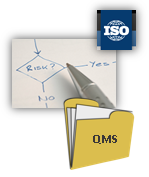Our experience in consulting the transition of the organizations to the new version of ISO 9001:2015 showed that the main «new things that were previously ignored» are the following four.
1. System-level analysis of internal and external context of the Organization.
1.1 Gathering information and analysis of the Context components in the following processes: ‘Management review’, ‘Marketing’, ‘Control of personnel’, ‘Design and development or products and (or) services’, ‘Production and service provision’, ‘Control of documented information’.
1.2 Distribution of information about the context internally in the Organization within the framework of control of organizational knowledge and documented information
1.3 Use of information about the context in QMS processes when planning and making management decisions.
The most interesting positive practice was the wording of certain quality objectives, based on the context changes through the application of QFD - matrices.
2. Actions to address risks and opportunities.
On the very first stage the positive outcomes are, at minimum:
- Management decisions multi-variance (management started reviewing all possible variants and estimating risks);
- Forward thinking about the consequences (this was not a mass phenomenon earlier).
3. Analysis of needs and expectations of interested parties (other than consumers and suppliers).
A good practice here is to:
- Define processes, where the needs of each interested party is monitored and analyzed, and clearly determine the requirements information format;
- Create the shareholders interests balance table (shareholder’s interest – Organization’s interest), at least in a simplified format.
4. Viewing Organizational knowledge as an important resource.
A good practice is to define in the QMS:
- The nature of knowledge;
- Information media;
- Processes- suppliers of the information – for each knowledge category;
- Level of employees’ access;
- Responsible for information updates.
You may find it useful to implement all theses in the QSP format.
We have implemented the mentioned above (with the exception of the QFD - matrices) in the




No comments:
Post a Comment